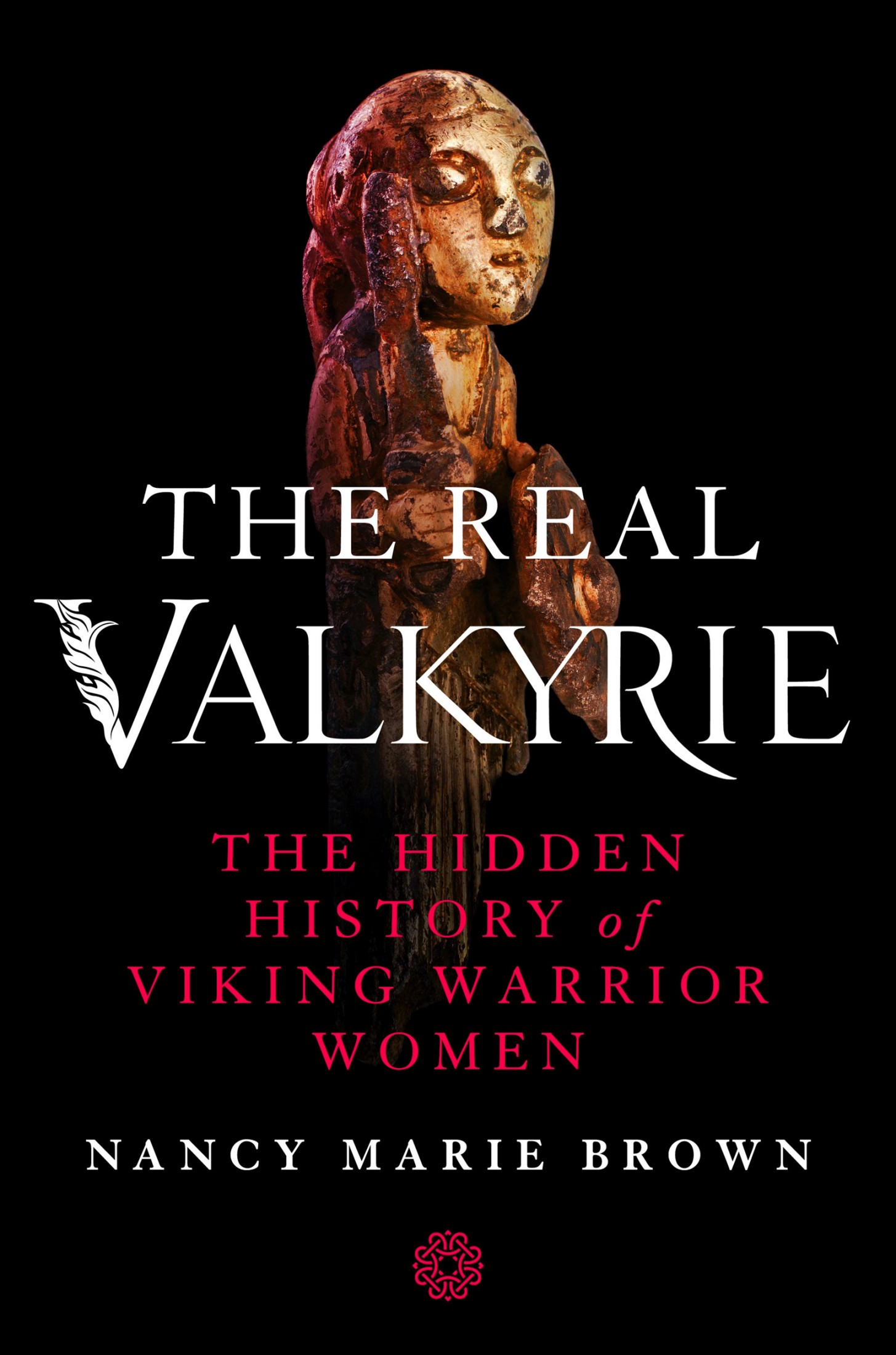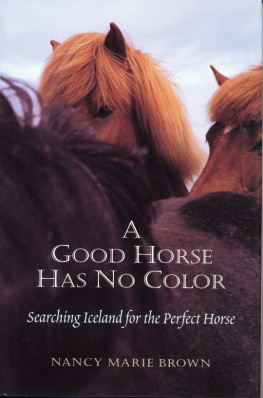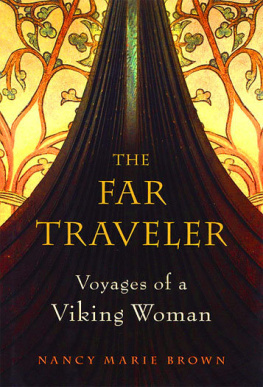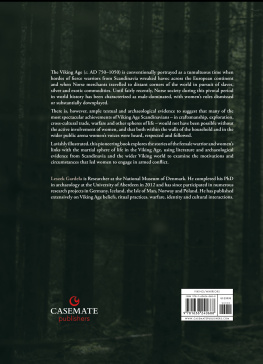Nancy Marie Brown - The Real Valkyrie: The Hidden History of Viking Warrior Women
Here you can read online Nancy Marie Brown - The Real Valkyrie: The Hidden History of Viking Warrior Women full text of the book (entire story) in english for free. Download pdf and epub, get meaning, cover and reviews about this ebook. year: 2021, publisher: St. Martins Publishing Group, genre: Art. Description of the work, (preface) as well as reviews are available. Best literature library LitArk.com created for fans of good reading and offers a wide selection of genres:
Romance novel
Science fiction
Adventure
Detective
Science
History
Home and family
Prose
Art
Politics
Computer
Non-fiction
Religion
Business
Children
Humor
Choose a favorite category and find really read worthwhile books. Enjoy immersion in the world of imagination, feel the emotions of the characters or learn something new for yourself, make an fascinating discovery.

- Book:The Real Valkyrie: The Hidden History of Viking Warrior Women
- Author:
- Publisher:St. Martins Publishing Group
- Genre:
- Year:2021
- Rating:5 / 5
- Favourites:Add to favourites
- Your mark:
- 100
- 1
- 2
- 3
- 4
- 5
The Real Valkyrie: The Hidden History of Viking Warrior Women: summary, description and annotation
We offer to read an annotation, description, summary or preface (depends on what the author of the book "The Real Valkyrie: The Hidden History of Viking Warrior Women" wrote himself). If you haven't found the necessary information about the book — write in the comments, we will try to find it.
Nancy Marie Brown: author's other books
Who wrote The Real Valkyrie: The Hidden History of Viking Warrior Women? Find out the surname, the name of the author of the book and a list of all author's works by series.
The Real Valkyrie: The Hidden History of Viking Warrior Women — read online for free the complete book (whole text) full work
Below is the text of the book, divided by pages. System saving the place of the last page read, allows you to conveniently read the book "The Real Valkyrie: The Hidden History of Viking Warrior Women" online for free, without having to search again every time where you left off. Put a bookmark, and you can go to the page where you finished reading at any time.
Font size:
Interval:
Bookmark:


The author and publisher have provided this e-book to you for your personal use only. You may not make this e-book publicly available in any way. Copyright infringement is against the law. If you believe the copy of this e-book you are reading infringes on the authors copyright, please notify the publisher at: us.macmillanusa.com/piracy.
For my sisters
I have standardized and Anglicized the spelling of foreign words and names (even within quotations) throughout this book, dropping all accents and diacritical marks. To make my speculations about the tenth century clear, I use quotation marks only for direct references to a text, medieval or modern; these are cited in the endnotes.
The holes in the record present one hazard, what we have constructed around them another.
Stacy Schiff, Cleopatra
Objectivity is not a possibility. Our definition of the past is part of the way we define ourselves.
Anthony Faulkes, The Viking Mind, or In Pursuit of the Viking, Saga Book XXXI
All I have are her bones. I dont know her name, or precisely where or when she was born. I dont know how she died, though bones often do betray such secrets. All I have are her bones, now boxed and stored in a museum in Sweden, bones gathered by an archaeologist in 1878 from a grave beside a hillfort overlooking the Viking town of Birka, where she was buried in the mid-tenth century in a spacious, wood-lined pit.
To tell her story, all I have are her bonesand what was unearthed with her: an axe blade, two spearheads, a two-edged sword, a clutch of arrows, their shafts embellished with silver thread, a long sax-knife in a bronze-ringed sheath, iron bosses for two round shields, a short-bladed knife, a whetstone, a set of game pieces (bundled in her lap), a large bronze bowl (much repaired), a comb, a snip of a silver coin, three traders weights, two stirrups, two bridles bits, and spikes to ride a horse on the ice, along with the bones of two horses, a stallion and a mare. Of her clothing all that remains are an iron cloak pin, a filigreed silver cone, four baubles or buttons of coiled silver wire, strips of silk embroidered with silver, and a scattering of mirrored sequins.
Until 2017, when DNA tests proved the bones were female, this grave, numbered Bj581, was held up as the classic Viking warriors grave. The position of the skeleton, wrote a Swedish archaeologist in 1966, gave the impression that he had been sitting in the grave, rather than laid out. The equipment indicates that this is a warriors grave rather than that of a merchant. The date of a silver coin, found underneath the skeleton of the dead man, provides a fairly good idea of the date of the grave: 913980 A.D.
The implications of the dead man turning into a dead woman dazzle me. They ignite my imagination. A burial with weapons and horses, an archaeologist claimed as late as 2008, used a widely recognised symbolic language of lordship, one that was unquestionably masculine. To assume all such weapons graves are male now seems to me to be a mistakeone that has skewed our image of the Viking Age. How does history change if we turn that assumption on its head?
There are other ways to interpret the grave, other ways to explain a female body buried with weapons. But the simplest seems to me the most likely. Defending their findings in 2019, the team that tested her DNA said Bj581 suggests to us that at least one Viking Age woman adopted a professional warrior lifestyle. They added, We would be very surprised if she was alone in the Viking world.
A Viking is a raider from the sea. During the Viking Age, roughly 750 to 1050, Europe was plagued by such pirates in their swift dragonships. The Vikings were traders and explorers, too. They were farmers, poets, engineers, artistsbut their place in history was carved by their swords. From the fury of the Northmen, O Lord, deliver us! wrote a French monk around the year 900. They ransacked and despoiled, massacred, and burned and ravaged, wrote another, who witnessed the Viking attack on Paris in 885. In Ireland in the mid-800s, a monk praised the safety of a storm:
Bitter is the wind tonight,
White the tresses of the sea;
I have no fear the Viking hordes
Will sail the seas on such a night.
Archaeology backs up the Vikings violent image: Across Northern Europe, from Russia in the east to Iceland in the west, Vikings are found buried with swords. Three thousand Viking swords are known from Norway alone. Assuming all sword-bearers are male, writers limn the Viking Age as hypermasculine: a time when shiploads of these huge and brawny men would suddenly appear out of the sea mists. They would pillage at will, mercilessly cutting down all opposition.
Lets set aside, for a moment, the idea that mercilessness is a masculine trait. How does an archaeologist know a buried Viking is male? The bones found beside the buried swords, if any, are degraded. Sexing them by their robustness or by the shape of the skull or pelvis is often not possibleand is always open to interpretation. Theres no internationally agreed-upon definition of robust; theres no absolute scientific scale for pelvic structure. DNA sexing is difficult and expensive and, so, rarely done. Instead, sexing by metal has been standard procedure since 1837, before archaeology as a science even existed. Graves with weaponseven cremation graves in which the bones have been crushed after burningare catalogued as male; those with jewelry are female. The thirty-some Viking graves in which slender, female-looking bones were unearthed beside weapons are ignored as noise in the data.
The result? Historians and novelists write confidently of ships carrying only huge and brawny men. Museum designers and filmmakers and Viking reenactors re-create in exquisite detail a male-dominated Viking world. When we hear the word Viking, we imagine a well-armed man.
Yet most people who died in the Viking Age were buried with nothing that will sex them. Even the elite, the people whose graves announce their high status, often hide their sexual identity, as if their gender mattered not at all. Half of the elite burials in some Viking graveyards contain neither weapons nor jewelry. Their grave goods, though rich, are horses and boats and knives and tools: things that cannot be gendered.
And now, in Birka grave Bj581, we have a woman buried as a Viking warrior. What does her grave tell us? That we dont know the Vikings as well as we thought.
In December 2012, a man using a metal detector near the village of Harby in Denmark found a small face peering up at him from a lump of frozen dirt. His find, cleaned up, was an intricately detailed figurine of gilded silver, about an inch tall, in the shape of a woman with long hair twisted into a ponytail. She carries a sword and shield.
I know of seven flat metal images of a woman with weapons, and seventeen showing a shield-carrier facing a horse rider armed with sword and spear, both perhaps female. These images were found in Denmark, England, Germany, and Poland. Similar images of women with weapons, fashioned from thread or carved in stone, come from Norway, Sweden, and Russia.

A three-dimensional Viking warrior, just over an inch tall, from Harby, Denmark.
The figurine from Harby is the first three-dimensional portrayal to appear. Like the others, she is dismissed as a valkyrie. By that the experts mean
Font size:
Interval:
Bookmark:
Similar books «The Real Valkyrie: The Hidden History of Viking Warrior Women»
Look at similar books to The Real Valkyrie: The Hidden History of Viking Warrior Women. We have selected literature similar in name and meaning in the hope of providing readers with more options to find new, interesting, not yet read works.
Discussion, reviews of the book The Real Valkyrie: The Hidden History of Viking Warrior Women and just readers' own opinions. Leave your comments, write what you think about the work, its meaning or the main characters. Specify what exactly you liked and what you didn't like, and why you think so.









![Haywood - Viking: The Norse Warrior’s [Unofficial] Manual](/uploads/posts/book/98981/thumbs/haywood-viking-the-norse-warrior-s.jpg)